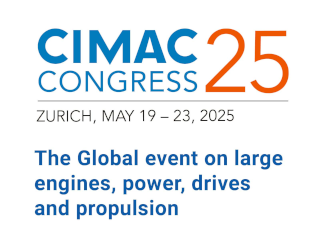Can it go lower yet? Cargo volumes in container shipping seem to be stabilising,
but the recovery is going to be patchy.
May might have been the worst month for liner shipping since the start of the corona crisis, with analysts and[ds_preview] market participants seeing the precipitous fall in volumes levelling out. However, container lines are expected to keep a tight reign on fleet capacity as the recovery in trade is expected to be protracted with the risk of local set-backs if the epidemic surges again. The consensus is that the second quarter will mark the bottom for liner shipping and also for container ship chartering, although the former will see a quicker turnaround. The good news is that sailing cancellations in liner shipping plateaued at just over 500 since the beginning of lockdowns in Asia, according to Danish research firm Sea-Intelligence. The experts noted that there are no further blank sailings announced beyond June and that a bit of blanked capacity in long-haul trades ex Far East actually got restored.
Partial reverse
As its managing partner Lars Jensen, a former Maersk man, pointed out, the partial reverse is led by THE Alliance which re-inserted two sailings in the transpacific trade and four sailings in the Asia-Mediterranean trade as per 19 May. »It tells us, at least for now, that the demand downturn has bottomed out and that carriers – at least in THE Alliance – are seeing sufficient demand for their remaining services…«, Jensen explained. The move also illustrates the carriers’ resolute approach to capacity management, preferring to cancel rather too much than too little capacity in a bid to keep slot utilisation up. Freight forwarders are confirming the slight improvement in sentiment. »Carriers realised that cargo volumes were better than expected, with many sailings completely overbooked and more containers getting rolled again,« noted Janis Bargsten, general manager of Flexport in Hamburg.
Capacity reductions in the Asia-Europe trade are therefore relaxed a bit during June, to -15% of pre-corona levels, he said. Perhaps cargo losses during the second quarter will not reach the 20-25% that A.P. Møller-Maersk CEO Soren Skou projected at the release of the group’s first quarter results. Time will tell.
UK maritime advisory Maritime Strategies International (MSI) forecast a more modest contraction of 15% year-on-year in »headhaul« trade volumes in the three months to July. Trade would then start to recover quarter-on-quarter, albeit still lagging levels during the previous year by 3%, it said. Fellow UK advisory Drewry predicts a full-year decline in loaded container traffic by 8% in its base case scenario.
Financial impact to peak
The financial impact on liner operators is generally expected to peak during the second quarter, although earlier fears of bankruptcies in the sector have been allayed. Several major carriers (Yang Ming, Hyundai, CMA CGM, Evergreen) already obtained various levels of state support and overall distress levels in the sector are not as severe as during the previous downturn of 2016, Drewry consultant Philip Damas explained. »However, if the crisis drags on into next year, you cannot exclude another carrier hitting Hanjin-type distress levels and disappear,« he warned in a web presentation.
Capacity reductions by container lines have shown remarkable success in stabilising or even pushing up spot freight rates despite the trade slump. According to the World Container Index (WCI), average freight rates today are 11% up year-on-year. Backhaul rates to Far East even went by up close to 30%, the China Import Containerized Freight Index showed. Meanwhile average bunker prices are still down significantly, though on the way up again. Both price and cost developments should help carriers to partly offset the effect of reduced carryings on their financials.
Pain for tramp owners worsening
By contrast, the pains for tramp owners are worsening faster by the day as more and more charter ships get redelivered to sit idle or to be re-employed only at much reduced rates. The fall in charter rates for ships of 1,100-4,250 TEU has accelerated to -10%, according to the New ConTex. For the bigger gearless classes of 4,250, 5,700 and 6,500 TEU losses even amount to 14-18% month-on-month. »The market for larger vessels is at a complete standstill,« as one major broker pointed out.
Meanwhile the surplus of spot vessels is growing and growing, knocking on 280 units worldwide during calendar week 21, with the fastest build-up in the post-panamax, the panamax and the midsize 1,500-1,800 TEU sectors. Even for those ships able to fix new business at market levels of $5,000-8,000, daily earnings are now close to opex levels.
Michael Hollmann















